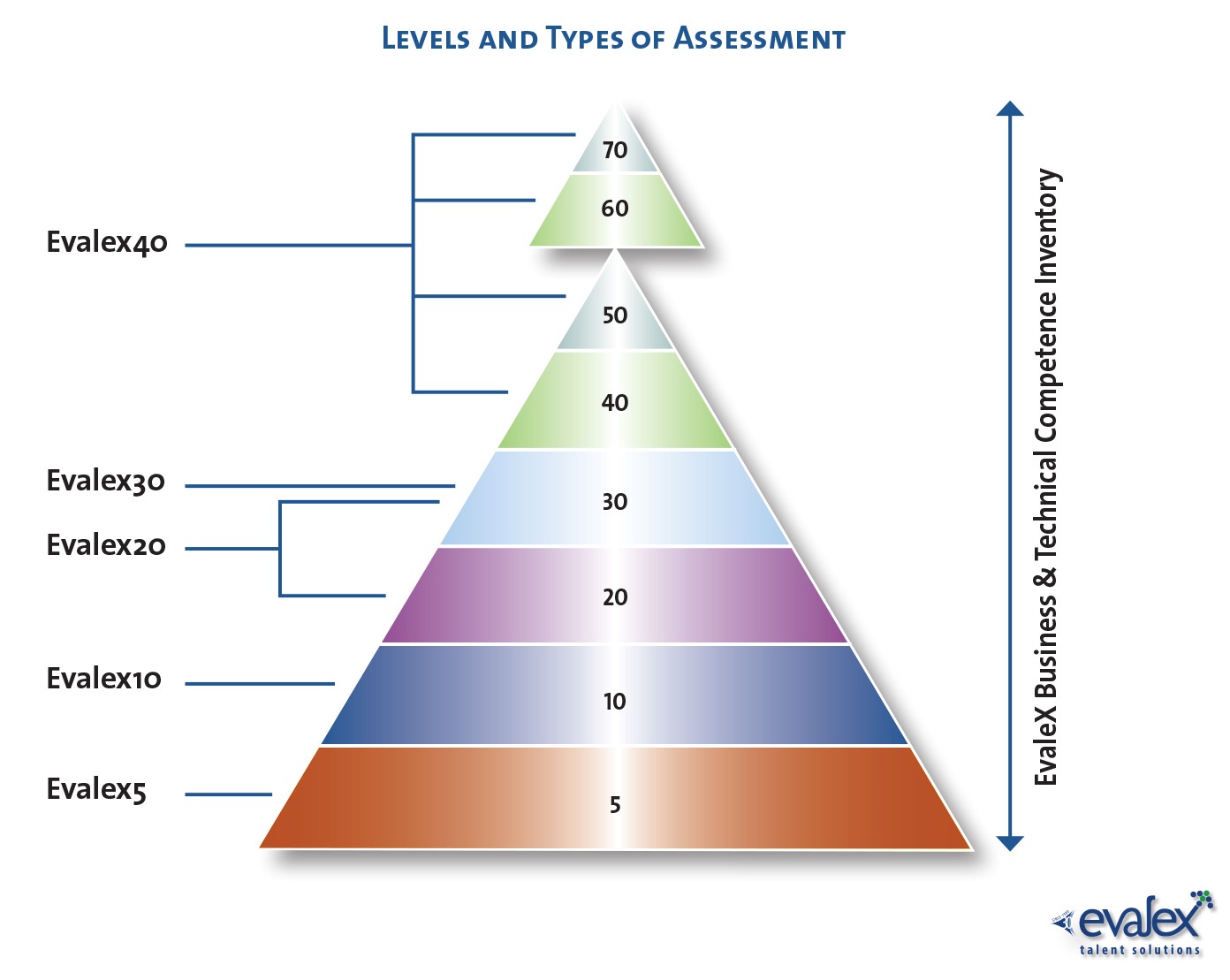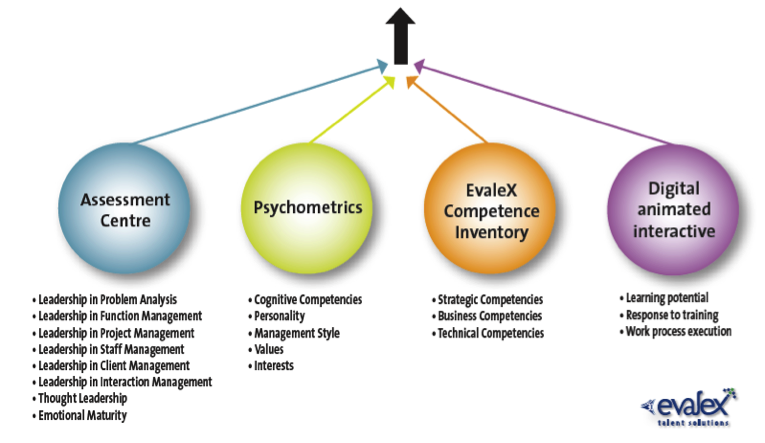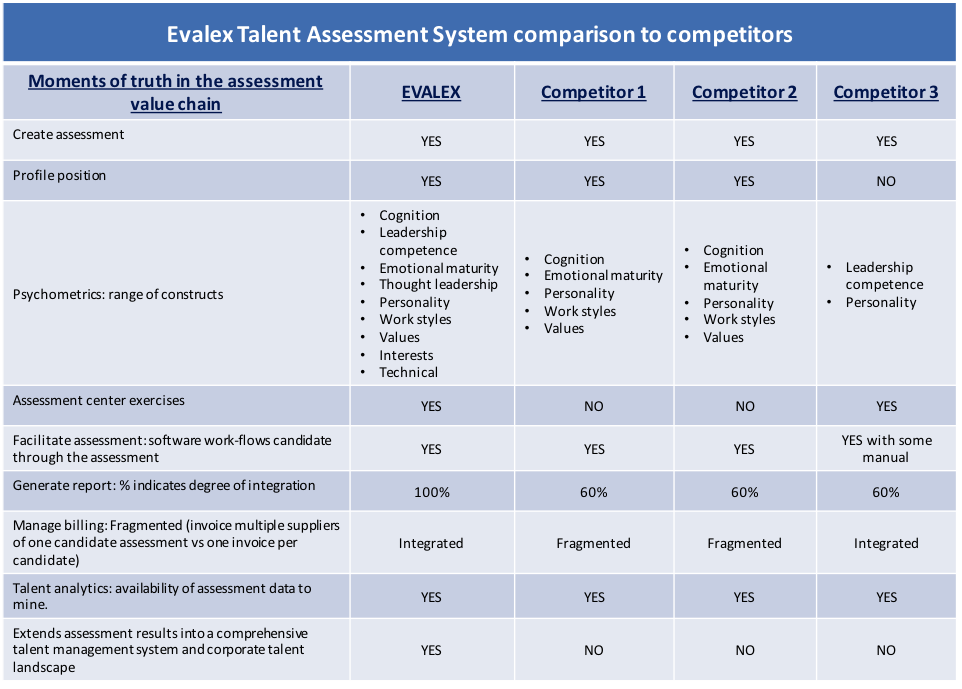Levels of Work
Evalex’s assessment solutions have been designed and developed to assess key drivers of performance at the seven levels of work identified by Elliot Jacques.
Jacques is the renowned author and creator of the theory of Stratified Systems Thinking (SST). This ground-breaking contribution towards understanding the nature of work – and how systems operate at different levels of management – has had a profound influence on the talent management process.
SST emerged a few decades ago and has stood the test of time as one of the cornerstone theories in organisation development.
Jacques identified seven levels of work as depicted in the diagram below. Evalex has developed assessment solutions to cover the total reach of all seven levels. The purpose of each solution is to assess the behaviour required for success at each successive level. The Evalex assessment solutions are based on the Stratified Systems Thinking, but we have a number of tools that aim at assessing both the level of a position and the ability of the individual to function at a required level.
The Evalex assessment solutions are based on the Stratified Systems Thinking, but we have a number of tools that aim at assessing both the level of a position and the ability of the individual to function at a required level.
Evalex Talent Assessment System
Evalex presents one of the most advanced and integrated assessment systems on the market.

The Evalex Talent Assessment system was conceived in 1980 and has evolved over time through research and application. It was first written into a computer application in 1986, with revisions in 1992, then enhanced as an Internet-based assessment tool in 2000, with constant upgrades and expansion. It is now one of the most advanced Internet-based assessment platforms on the market.
What makes the Evalex Talent Assessment System unique and differentiates it from others available on the market is the incorporation of four distinctly different assessment technologies for the assessment of cognitive, behavioural, leadership and technical competencies.
Most other systems focus either on assessing only behavioural competencies or management competencies. They therefore present either ability/personality/styles/motives questionnaires or only assessment centres, but are not strong on providing both or the inclusion of technical competencies.
Four Main Technologies
Evalex is the only assessment platform that integrates four major assessment technologies into one solution, namely:
- Assessment centre technology
- Psychometrics
- The Evalex Competence Inventory (business and technical competencies)
- Digital animated interactive exercises
Integration of Four Technologies into One Assessment Session

Ours is the only assessment platform where the psychologist can create an integrated assessment session combining six assessment centre simulations/case studies and multiple psychometric tools that the candidate can complete in one online session, providing a totally integrated report across all the tools.
What makes Evalex unique is that, based on years of experience and research, we have developed our own assessment technology consisting of a range of assessment instruments that can assess:
- Cognitive competencies
- Leadership competencies
- Behavioural competencies
- Business competencies
- Technical competencies
- Learning potential
The system can handle the following moments of truth in the assessment value chain:

Cognitive Functioning: Business Comprehension Test
Nature of Questionnaire: A questionnaire querying the respondent’s comprehension capability across five key cognitive processes. In this way the respondent’s level of comprehension can be compared with the level of complexity inherent to the position.
Dimensions:
The five cognitive processes assessed are:
- Abstract reasoning
- Assimilated understanding
- Contextual reasoning
- Deductive reasoning
- Numeric reasoning
Deliverable: A report indicating performance in each of the five cognitive processes in the form of a bar chart, with descriptions interpreting high and low scores.
Question type: The BCT consists of 50 questions. The respondent needs to read the question, mentally process the information and then choose the one correct answer of five given answers.
Duration: 40 minutes
Application: Very useful where the best of a group of applicants for a position needs to be selected or to ascertain whether a person will be able to deal with the complexity of a given position.
Research: Research conducted in our client companies indicated that the BCT as a cognitive test has a predictive validity (correlation of scores with performance and position level) as high and in some cases higher than the CPP, CPA and CNT.
Decision Effectiveness
Decision effectiveness is the bedrock in transforming an organisation into a high performance organisation, a manager into a high impact corporate leader and a businessperson into a high impact entrepreneurial leader.
In corporate life, as in individual careers, there are a number of strategic decisions that materially affect the direction of a company or an individual towards eventual prosperity. In reality, managers and organisations will not succeed at getting all these decisions right, but the high performance organisation and high impact leader have got to have a track record of making fewer mistakes.
Decision effectiveness is a complex concept where multiple cognitive processes need to synchronise ration to produce decisions that will stand the test of time. To be successful in any managerial position, the manager needs to handle a number of key situations and events competently. Problem analysis and decision making are among the most critical of these, as all the other events fall in line after these decision making points have been negotiated.
Not all people are equally effective in analysing problems and making decisions. It is therefore critical for organisations to ensure that managers who are appointed to key positions have this ability and for managers to understand their own decision making processes so as to develop and improve these.
What is Evalex Decision Effectiveness?
Evalex Decision Effectiveness (EDE) is an instrument carefully designed to assess and evaluate the cognitive processes involved in problem analysis and decision making that combine to determine decision effectiveness.
The EDE is based on in-house research that analysed the decision making style of 7 500 managers from more than 2 000 organisations across all levels of management.
The EDE is anchored in the ground-breaking theories in the field of cognitive psychology of Elliot Jacques, Keith Stanovich and Richard West, as well as the Nobel prize winning theories of Daniel Kahnneman.
EDE presents the candidate with a problem to be analysed and solved and maps how his/her cognitive processes function. The system provides an overall Decision Effectiveness score with a recommendation of the level of position at which the candidate can function, as well as future potential.
How Do We Make Decisions in the Business World?
As we navigate the landscape of the modern organisation, we are faced with problems to solve and decisions as to which direction to take. When such a situation is encountered, the situation usually provides a cue, which unlocks a set of information in our memory. This information in turn leads to questions and their answers unlock even more sets of information. This process of analysis and fact finding, reasoning and decision making involves a growing cascade of information that is connected, associated and forms a coherent cognitive framework in our mind about the problem and the probable action required.
The first cognitive process that kicks in is our system-one thinking: associative activation. One evoked question or idea or set of information automatically leads to activation of another set of information, which the brain then retrieves from memory. When this intuitive system-one process has run its course and no solution has been found that can be endorsed as most probably correct, the slower, more deliberate rational processes of system-two thinking starts up.
The system-two thought process calls for a more deliberate, focused, concentrated analysis consisting of algorithms, computation and rationality. Multiple processing is required as some information is held in queue to be processed, whilst others are in process and the result of previous processes are held in memory for reporting and connections. Memory is key, so is parallel processing of different ideas and concepts while their relationships and inter-dependencies are constantly monitored.
Evalex Decision Effectiveness consists of three main components: Firstly a business problem developed with multiple facets, enormous depth and variation. Secondly, a comprehensive theory of cognition on top of which is built component number three: a highly advanced software engineering solution that tracks the cognitive processes involved.
Thirteen different cognitive processes are tracked and reported on as the candidate navigates his/ her way through the problem.
The outcome of the assessment is a five-page report detailing the performance of each of the 13 processes, clearly answering two crucial questions:
- Potential: At what level of complexity (level of work) can this candidate perform now and in the future?
- Development: What can the candidate do to improve his/her cognitive processes in order to function at a higher level of work?


